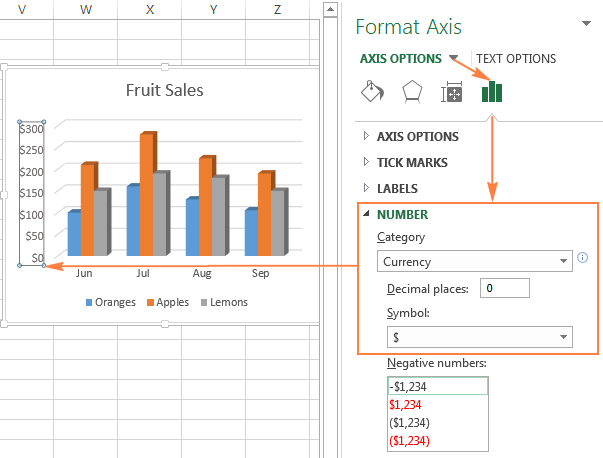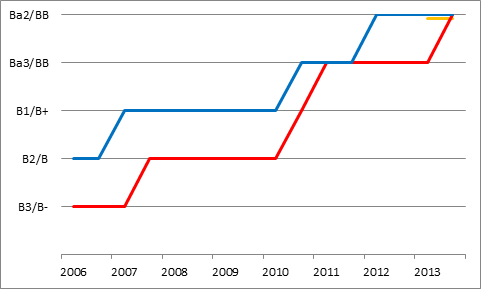
Right-click the axis you want to change and navigate to Select Data and the Select Data Source window will pop up, click Editģ. Select the Chart that you have created and navigate to the Axis you want to change.Ģ. Be more efficent and accomplish more with Excel Beginner to Advance Course up to 90% discount from this link.ġ. You can also create a new set of data to populate the labels. You will add corresponding data in the same table to create the label. The procedure is a little different from the previous versions of Excel 2016.

Otherwise, the zero value (0) gets the positive number formatting.Often there is a need to change the data labels in your Excel 2016 graph. On the other hand, you may also add formatting for zero section. Since the sections are optional, you can omit the rest. Our first example is using the first syntax where the first two sections represent p ositive and negative numbers.

Select Custom item in the Category list.You can find the number formatting selection under Number section.Open the Axis Options section if it isn't active.Double-clicking opens the right panel where you can format your axis. Double-click on the axis you want to format.How to add custom formatting to a chart's axis

If you are new to Excel's number formatting concept, you can check Number Formatting in Excel - All You Need to Know article.

This is because Excel populates axis points on the fly based on data and chart size. In this guide, we’re going to show you how to format axis labels individually in Excel.Īs you have already known that there is no way to select an individual item in a chart axis.


 0 kommentar(er)
0 kommentar(er)
